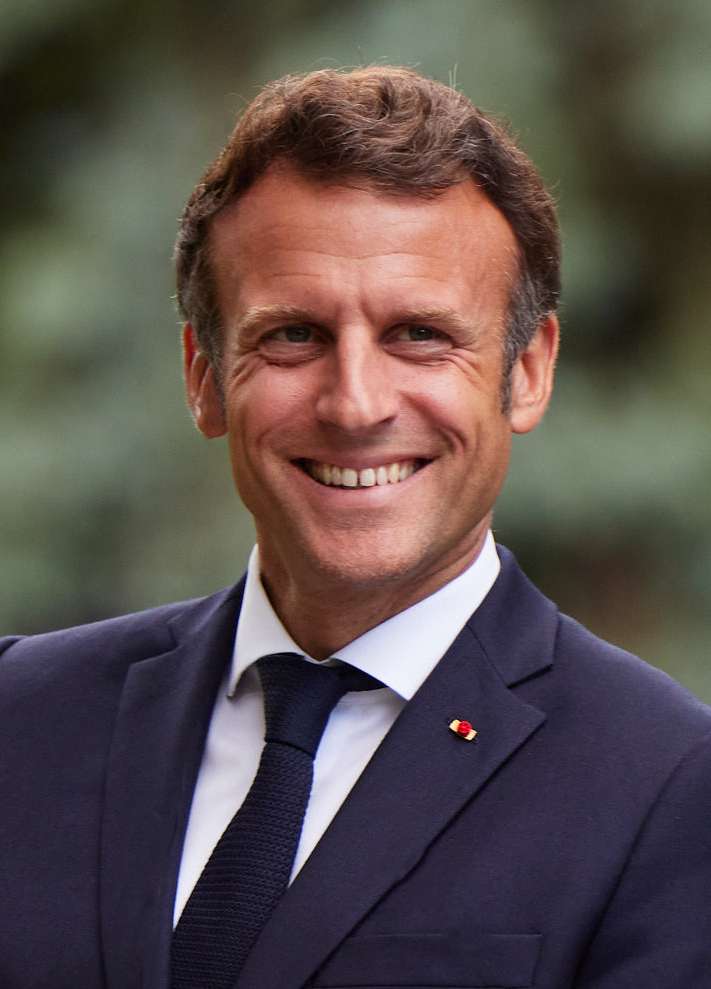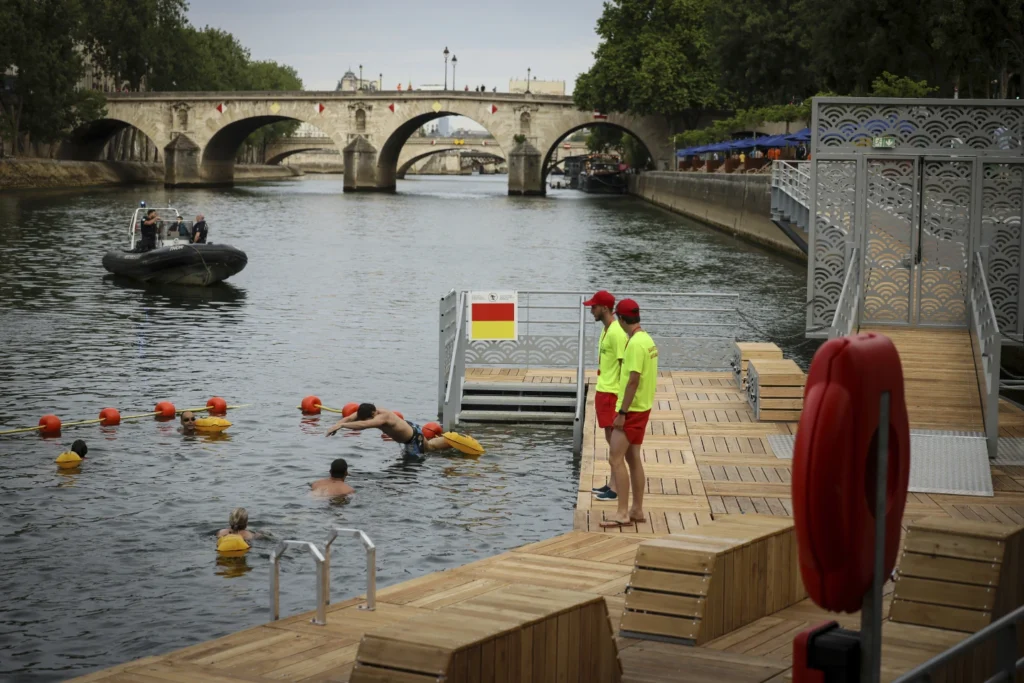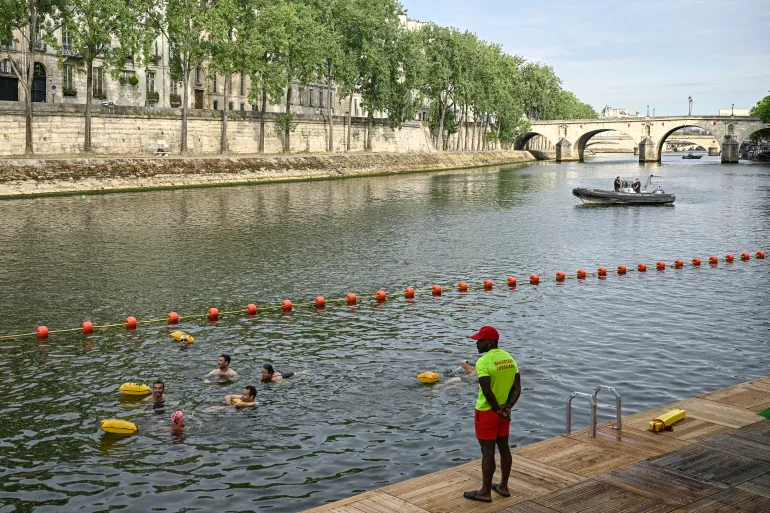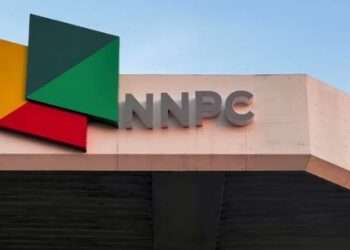The iconic River Seine has reopened to swimmers in Paris, allowing people to take a dip in the French capital’s waterway for the first time in at least a century.
This comes after a more than billion-euro cleanup project that made it suitable for Olympic competitions last year.
Swimming in the Seine had been illegal since 1923, with a few exceptions, due to pollution and risks posed by river navigation.
Parisians and tourists alike, looking to cool off this summer, can dive in – weather permitting – at three bathing sites: one close to Paris’s Notre-Dame cathedral, another near the Eiffel Tower and a third in eastern Paris.
Taking a dip outside bathing areas is still banned for safety reasons.
Swimming zones are equipped with changing rooms, showers and beach-style furniture, offering space for 150 to 300 swimmers.
The seasonal opening of the Seine for swimming is seen as a key legacy of the Paris 2024 Olympics, when open-water swimmers and triathletes competed in its waters, which were specially cleaned for the event.
Paris Mayor Anne Hidalgo, who visited the bras Marie site on its reopening, said, “It’s a childhood dream to have people swimming in the Seine.”
However, officials reminded swimmers of potential dangers, including strong currents, boat traffic and an average depth of 3.5 metres (11 feet).
To mitigate that risk, lifeguards will assess visitors’ swimming abilities before allowing independent access, while a decree issued in late June introduced fines for anyone swimming outside designated areas.
The swimming spots will be open for free until August 31,2025 at scheduled times to anyone with a minimum age of 10 or 14 years, depending on the location.
The promise to lift the swimming ban dates back to 1988, when then-Mayor of Paris and future President Jacques Chirac first advocated for its reversal, about 65 years after the practice was banned in 1923.
President Emmanuel Macron wrote on X, “One of my predecessors (Chirac), then Mayor of Paris, dreamed of a Seine where everyone could swim.”
He described the move as the result of a “collective effort” and a moment of “pride” for France.

Ahead of the Olympic Games, authorities invested approximately 1.4 billion euros ($1.6bn) to improve the Seine’s water quality.
Since then, work carried out upstream, including 2,000 new connections to the sewage system, promises even better water quality – with an unappetising catch.
On rainy days, the mid-19th-century Parisian sewage system often overflows, causing rain and wastewater to pour into the river.
Paris city official, Pierre Rabadan, said that glags will inform bathers about pollution levels in the water every day, and if it rains, the sites will likely close the day after.
The presence of the faecal bacteria Escherichia coli (E coli) and enterococci in the Seine will be assessed daily using live sensors and samples.
A Welcome Respite From Scorching Heat

With record-breaking heat hitting Europe, including France’s second warmest June since records began in 1900, authorities said that they expect Parisians to embrace the relief of a refreshing swim.
However, some scepticism about the water quality remains.
Dan Angelescu, Founder and CEO of Fluidion, a Paris and Los Angeles-based water monitoring tech company, has routinely and independently tested bacterial levels in the Seine for several years.
He said that despite being in line with current regulations, the official water-testing methodology has limitations and undercounts the bacteria.
“What we see is that the water quality in the Seine is highly variable. There are only a few days in a swimming season where I would say water quality is acceptable for swimming.”
Dan Angelescu
Mayor Anne Hidalgo, who already took a dip last year, was present at the Seine’s reopening, holding up a transparent bottle filled with river water as a show of confidence.
Environmental authorities confirmed bacteria levels were well below official thresholds.
READ ALSO: GIIF, AfDB, and 24H+ Secretariat Sign Landmark Agreement to Develop Volta Economic Corridor



















